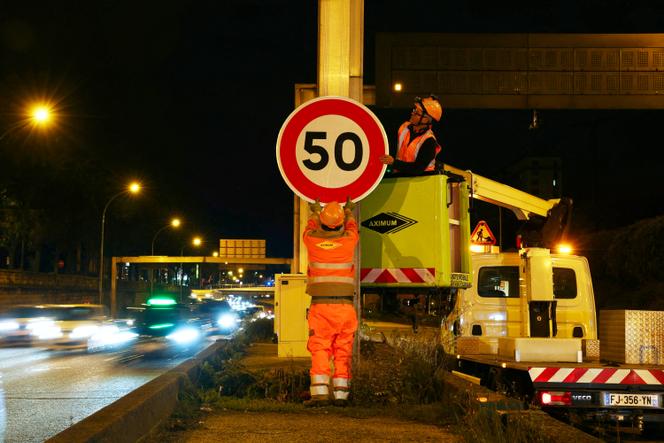


One year after the speed limit on the Paris ring road was reduced to 50 kilometers per hour, and seven months after the introduction of the carpool lane, what can be said about the impact of these two measures in terms of traffic and pollution? Two recently published studies have provided some initial answers and paint a generally positive picture, though a comprehensive assessment remains difficult to establish.
The most recent, an evaluation published Wednesday, October 1 by Airparif, the independent body monitoring air quality in the Paris region, highlighted "significant results" and an "improvement in air quality" in areas directly adjacent to the ring road, but urged caution. While Airparif reported an "average decrease in nitrogen dioxide concentrations" (NO₂) – a pollutant mainly emitted by road traffic and known to cause respiratory illnesses – this was an estimate rather than an objective measurement.
To assess the effects of these two measures specifically on air quality (that is, excluding improvements in engine technology or the impact of weather conditions), Airparif employed a methodology based on a "scenario-based approach." Starting from the established fact that traffic on the ring road has decreased by an average of 4% since 2023, and that "this reduction is more pronounced than the long-term trend observed over the past 20 years," Airparif attributed most of this drop to the speed and carpool lane measures. When applying actual pollution data from 2023 to traffic levels projected for 2025, the agency estimated that NO₂ levels have dropped 6% on average.
You have 64.32% of this article left to read. The rest is for subscribers only.
